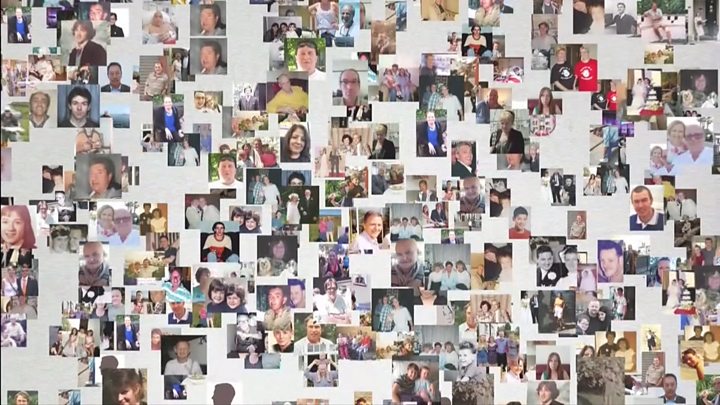Image copyright
PA
The infection of up to 30,000 people with contaminated blood has been called the biggest treatment disaster in NHS history. Thousands have died.
A public inquiry is now under way – but what is already known about the scandal?
Who was affected?
People with haemophilia and other bleeding disorders were given blood infected with HIV and hepatitis viruses, during the 1970s and 1980s.
It was the result of a new treatment intended to make their lives better. A clotting agent called Factor VIII was introduced to help their blood clot.
Before this, patients faced lengthy stays in hospital to have transfusions, even for minor injuries.
People who had blood transfusions after an operation, or childbirth, are also thought to have been exposed.
About 5,000 people are believed to have been infected – but some estimates put the number at 30,000. Nearly 3,000 people have died.
Image copyright
Family photo
Su Gorman’s husband, Steve Dymond, died in December
The public inquiry has heard the stories of some of those affected.
One of the first to take the stand was Derek Martindale, who has haemophilia. He was 23 when he was diagnosed with HIV and given a year to live, in 1985. He survived but his brother – who was also infected with HIV – did not.
How did it happen?
The UK was struggling to keep up with demand for the Factor VIII blood clotting treatment, so supplies began to be imported from the US.
But much of the human blood plasma used to make it came from donors such as prison inmates and drug-users, who sold their blood.
These groups were at higher risk of blood-borne viruses.
However, at the time, HIV had not been diagnosed and understanding about hepatitis was still developing.
The risk of contamination was raised further because Factor VIII was made by pooling plasma from up to 40,000 donors and concentrating it.
How long did this last?
By the mid-1980s, once it was clear HIV was blood-borne, the products started to be heat-treated, to kill the viruses.
But questions remain about how much was known before this time.
Despite these precautions, some of the contaminated blood products remained in circulation and continued to be used.

Media playback is unsupported on your device
Screening of all blood products began in 1991.
And by the late 1990s, synthetic treatments for haemophilia became available, removing the infection risk.
What are the aims of the inquiry?
This UK-wide inquiry now under way is the first that can demand that witnesses give evidence.
It comes after decades of campaigning by victims, who claim the risks were never explained and the scandal was covered up.
The government has been strongly criticised for dragging its heels.
A previous, privately funded inquiry held no official status. It could not compel witnesses to testify, or demand the release of important documents.
In Scotland, a seven-year investigation was criticised as a “whitewash” when it was published in 2015.
The current inquiry, due to last two years, was announced only after the UK government faced a possible defeat in a Commons vote demanding one.
Have people been infected elsewhere in the world?
There have been thousands of cases of people being given infected blood in the US.
But other countries also imported blood products during the 1970s and 1980s.
In Europe, cases in France, Ireland, Portugal and Italy have been identified. Japan, Canada, Iran and Iraq have also been caught up in the scandal.
Image copyright
Getty Images
Theresa May says the scandal “was a tragedy that should never have happened”
In the US, companies that supplied infected products have paid out millions of dollars in out-of-court settlements.
In other countries, politicians and drug companies have been convicted of negligence.
None of that has happened in the UK – although victims have been given limited financial support.
At the opening of the inquiry, it was announced that criminal trials could follow.
